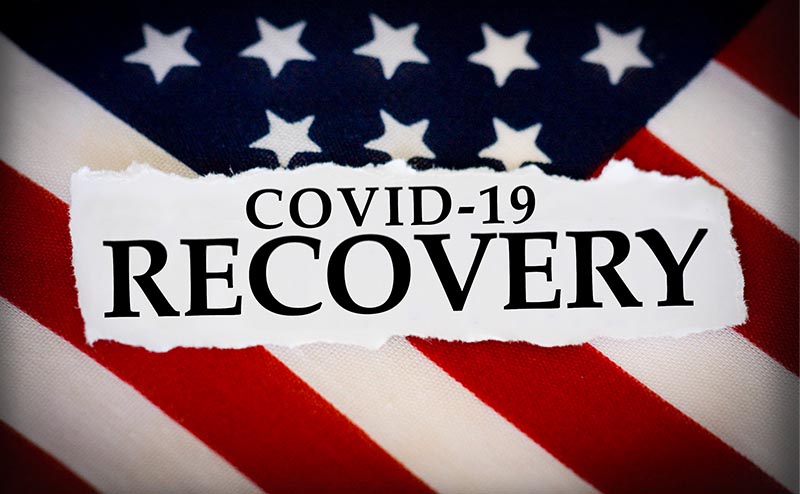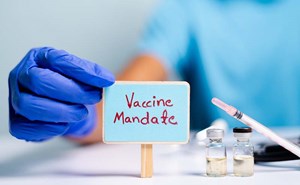Lately, we seem to be hearing loud and clear from many people (including government officials) that they are ready to move on from the COVID-19 pandemic. However, in the regulatory world, what exactly does “move on” truly mean? While many federal agencies have issued pandemic policies, the Centers for Medicare & Medicaid Services (CMS) probably wins the prize for the most. CMS has issued countless waivers to both the Medicare and Medicaid programs since the public health emergency (PHE) was first declared in January 2020. Most of these waivers have been implemented using a special legal authority that solely exists during a national emergency. The waivers and pandemic policies have truly transformed the health care landscape. Congress can (and in some cases already has) intervene and choose to extend or make permanent these waivers once the PHE ends. However, without Congressional action, many of the policies and flexibilities that you have become accustomed to over the last two years could vanish.
So, let’s take a look at where things stand in terms of the PHE and the major pandemic programs and policies that have affected you and your patients. First of all, it is important to note that although the Biden Administration has started planning for the eventual end of the PHE (more on that later), it has NOT officially announced when that would be. By law, the PHE can only be extended for 90 days at a time, and it has been extended eight times since January 2020. It is currently set to expire in around a month on April 16. However, while the Secretary of the U.S. Department of Health and Human Services (HHS), Xavier Becerra, could technically choose not to extend it again, the Administration has made it clear to states and other stakeholders that it will give plenty of heads up (at least 60 days) before deciding to end the PHE. Thus, my best guess is that it will be extended for at least one more 90-day period. However, obviously, the timeline will depend on whether our country faces another COVID-19 wave.
Although there are a plethora of COVID-19 policies, programs, and waivers, I want to provide updates on a few of the major ones.
- Telehealth: As described in a previous Regs and Eggs blog, CMS and other federal agencies have instituted policies and waivers that have paved the way for the explosion of telehealth services that we have witnessed during the PHE. Of all the policies that were implemented, the one that has had the greatest impact has probably been the waiver of the “geographic” and “originating site” requirements for Medicare telehealth services. The geographic and originating site restrictions have historically limited Medicare payment for telehealth to services performed in rural areas, where the patient is located at a facility such as a hospital and the clinician performing the service is located at another facility. By waiving these restrictions, patients have been able to receive telehealth services from anywhere during the pandemic—both in urban and rural areas and from the comfort of their own home.
Since this waiver understandably led to a significant increase in the use of telehealth services, especially during the initial phase of the pandemic, there had been much debate in Congress about whether or not to continue the waiver, and for how long. Some telehealth proponents were pushing for Congress to permanently repeal the geographic and originating site Medicare restrictions, while others were promoting a more cautious approach. These telehealth skeptics have been concerned about whether the proliferation of telehealth during the pandemic has led to an overall increase in health care utilization and costs and have been asking to see data to determine whether telehealth services actually helped to improve patient outcomes. One of the skeptics is the Medicare Payment Advisory Commission (MedPAC), which has repeatedly called for the collection of more data to help inform future Medicare telehealth policies (most recently in its March 2022 report that was released earlier this week). In the end, Congress actually decided to extend the waiver for 151 days (around five months) in an omnibus appropriations package that was passed that week. That 151-day period would start once the PHE ends (whenever that is).
Although that 151-day extension provides some breathing room for Congress to decide whether or not to continue the waiver on a more permanent basis, it does not eliminate all the potential barriers to telehealth. First, Congress did not extend the waiver for critical access hospitals, so patients receiving telehealth services from these facilities will be subject to the originating site restrictions once the PHE ends. Further, there is still the issue of state licensing. Currently, there are regulatory barriers that restrict the ability for physicians to get licensed and credentialed in multiple states so they can provide telehealth services to patients across state lines. During the PHE, CMS issued a temporary waiver to allow physicians who are licensed in one state to provide services to a patient another state. This waiver only applies to Medicare and Medicaid patients. Further, for the waiver to be effective, the state where the physician is performing the telehealth service must also waive its licensure requirements. While many states have allowed this flexibility during the PHE, it’s not clear whether they will continue doing so once the PHE ends.
It is also important to note that CMS has the regulatory flexibility to extend certain telehealth policies past the end of the PHE without Congressional action. For example, CMS has already decided to keep the emergency department (ED) evaluation and management (E/M) codes (the codes that you as emergency physicians most commonly bill) on the list of approved Medicare telehealth services through the end of 2023. This means that you can continue to be reimbursed for emergency telehealth services you deliver to Medicare beneficiaries through at least the end of next year. In addition, it appears that CMS will allow clinicians to use telehealth services to perform the medical screening exam, a key component of the Emergency Medical Treatment and Labor Act (EMTALA), even after the PHE ends. In its COVID-19 EMTALA guidance, CMS lists telehealth as an option for providing the MSE under the existing EMTALA requirement without a waiver.
Beyond just CMS, other federal agencies have allowed the use of telehealth to reach vulnerable populations during the pandemic. One important example of such a policy comes from the Drug Enforcement Administration (DEA), which adopted protocols to allow DEA-registered practitioners to prescribe controlled substances to their patients without having to interact in-person with their patients. Under the DEA’s policy (which became effective on March 31, 2020), authorized practitioners can prescribe buprenorphine over the telephone to new or existing patients with opioid use disorder (OUD) without having to first conduct an examination of the patient in person or via telehealth. This flexibility will probably go away once the PHE ends.
- COVID-19 Cost-Sharing: The initial bills that passed Congress after the pandemic started in 2020, the Families First Coronavirus Response Act (FFCRA) and Coronavirus Aid, Relief, and Economic Security Act (the CARES Act), included provisions that required Medicare, Medicaid, and most private health insurers to waive patient cost-sharing (such as copays, coinsurance, or deductibles) for COVID-19 testing and diagnostic services. Also covered were office and outpatient visits (including ED visits) that resulted in an order for, or administration of, a COVID-19 test. In other words, patients haven’t needed to pay for any ED visits that resulted in them receiving a COVID-19 test since March 2020. The cost-sharing waivers for testing and testing-related services expire at the end of the PHE.
A notable omission in those first two pieces of COVID-19 legislation was the patient’s responsibility to pay for COVID-19 treatment. The initial bills did NOT require Medicare, Medicaid, and most private health insurers to waive patient cost-sharing for COVID-19 treatment services (i.e., all the services a patient would receive once they had contracted the virus, including hospitalizations). Although some health plans chose to do so in the initial stages of the pandemic, they have long since ended those policies.
As you are well aware, there have been other federal efforts to encourage vaccinations and to make “at home” COVID tests available to individuals. The CARES Act required Medicare, Medicaid, and private health plans to cover any qualifying coronavirus preventive service, including a COVID-19 vaccine, without imposing any cost-sharing requirement. Like other preventive services, vaccines will continue to be free to patients even past the end of the PHE. Further, in terms of testing, the White House just announced that it will allow for another set of free at-home tests to be sent to U.S. households. - COVID-19 Financial Support: There have been a few major federal financial support programs that have helped cover health care facilities’ and clinicians’ increased expenses and lost revenues due to COVID-19: the Paycheck Protection Program (PPP), the Provider Relief Fund, and the Health Resources and Services Administration (HRSA) Uninsured Program. However, it appears that the era of COVID-19 federal relief will soon come to an end.
Although the PPP officially ended last May, the Provider Relief Fund and the HRSA Uninsured Program have still been dishing out rounds of funding and payments. HHS announced additional distributions from the Provider Relief Fund last month. In its fourth phase of distributions, HHS has provided around $11.5 billion to more than 78,000 providers in all 50 states, Washington D.C., and five territories. Now, it appears that HHS has distributed or plans to distribute nearly all of the $178 billion that Congress allocated to the Provider Relief Fund."
The HRSA Uninsured Program has also been an important program for you as emergency physicians who routinely see uninsured patients. Since early 2020, the Program has reimbursed health care facilities and clinicians for COVID-19 testing and treatment services delivered to uninsured patients at Medicare payment rates. Once vaccines became available, vaccine administration services were also eligible for reimbursement under the Program. In all, the Uninsured Program has paid out nearly $19 billion for testing and treatment services and vaccine administration. Although HRSA never specifically stated how much it was allocating to the Program, in a broader letter to Congress on COVID-19 related needs sent earlier this month, the White House stated that available funding for the Program is projected to be exhausted in late April or early May of this year, “and HRSA would need to stop accepting claims for the funds as soon as this month unless additional resources are provided.”
It does not appear at this time that Congress plans to provide additional funding to the Provider Relief Fund or the HRSA Uninsured Program. None was included in the omnibus appropriations bill passed last week, and Congress doesn’t seem to be willing to appropriate any additional COVID-19 relief in the foreseeable future. On the HRSA Uninsured Program webpage, HRSA now states that it will stop accepting claims for testing and treatment on March 22 and claims for vaccinations on April 5. - Independent Free-Standing Emergency Departments: Independent free-standing emergency departments (FSEDs) are EDs that are not affiliated with hospitals. Certain states, most notably Texas, have specific laws and regulations in place around independent FSEDs, allowing them to truly function as stand-alone emergency departments. However, under federal law, independent FSEDs have no means of becoming Medicare- or Medicaid-participating facilities and therefore cannot be reimbursed for services delivered to Medicare or Medicaid beneficiaries.
During the pandemic, CMS used its special waiver authority to temporarily allow licensed independent FSEDs in Colorado, Delaware, Rhode Island, and Texas to enroll in Medicare and Medicaid. To do so, CMS waived certain Medicare and Medicaid hospital Conditions of Participation (CoPs). The hospital COPs are a set of requirements that hospitals have to meet in order to participate in Medicare and Medicaid. While the COPs cover emergency services, they also include all the other necessary functions of a hospital. During the pandemic, CMS allowed independent FSEDs to temporarily act as “hospitals” under the Medicare and Medicaid programs without having to meet all the COP requirements. However, once the PHE ends, this waiver expires, and independent FSEDs would have to meet all the hospital COPs in order to continue receiving Medicare and Medicaid reimbursement—a nearly impossible task for facilities that only provide emergency services. In the past, ACEP has supported legislation that would allow independent FSEDs to enroll in Medicare and Medicaid as long as they meet certain conditions, similar to those that are required for hospital-owned FSEDs. - Medicaid Coverage: Last, but definitely not least, there is a significant concern that millions of people will lose their Medicaid and Children’s Health Insurance Program (CHIP) coverage once the PHE ends. To ensure that lower-income Americans received the care they needed during the pandemic, Congress, through the FFCRA, provided additional federal support to states that expanded and were able to maintain their Medicaid and CHIP rolls. Nearly all states took advantage of this increased “Federal Medical Assistance Percentage (FMAP)” in some form—leading to a significant increase in overall Medicaid enrollment. According to CMS, Medicaid and CHIP enrollment as of September 2021 was nearly 85 million, an increase of 14 million (20 percent) from February 2020 levels.
Once the PHE ends, the increased FMAP goes away, leaving states responsible for more of the cost of caring for this population. States undoubtedly will need to re-evaluate who will remain eligible for Medicaid as they “unwind” from the PHE and go back to traditional Medicaid and CHIP operations and funding levels. To help states with this “unwinding process” and to ensure that there is a reasonable process in place for reassessing Medicaid eligibility, CMS has issued guidance to states that specifically lays out a 12-month time period for making these eligibility re-determinations. In the guidance, CMS states that it “will work with states and provide continued technical assistance to ensure they are able to restore routine operations in a manner that promotes continuity of coverage for eligible individuals and seamless coverage transitions for those who become eligible for other insurance affordability programs.” CMS is hopeful that some of the people who will be cut from Medicaid will be able to enroll in the Affordable Care Act (ACA) Exchanges.
All in all, although it is unclear when the PHE will end, once it does, the health care system could look significantly different. While some major policies and innovations (such as telehealth) could continue to be in place, others will disappear immediately. All stakeholders—CMS, other federal agencies, states, health care facilities, clinicians, and patients—will have their hands full “unwinding” from the PHE and figuring out how best to adapt to a new health care landscape that doesn’t include mountains of waivers and rivers of regulatory flexibilities.
Until next week, this is Jeffrey saying, enjoy reading regs with your eggs!






